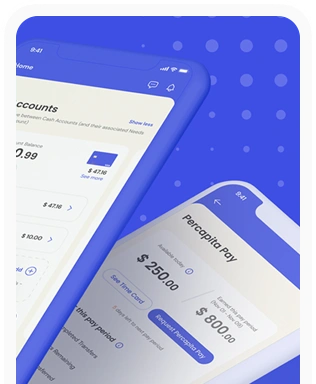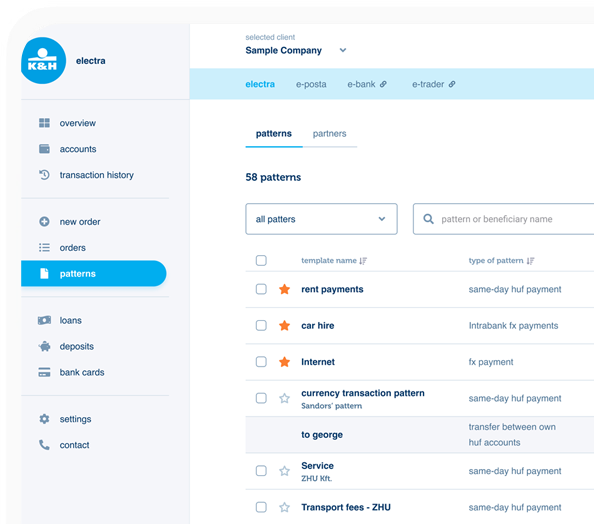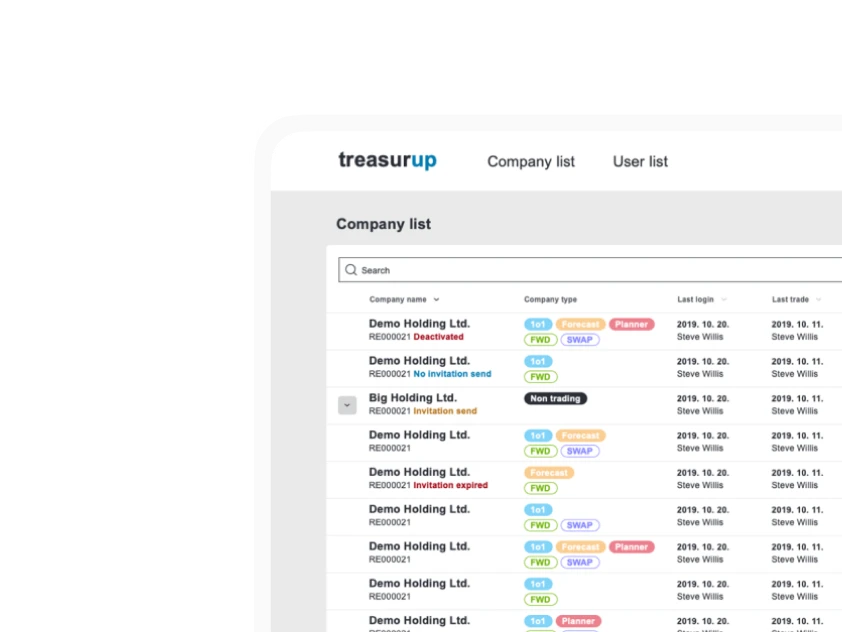Beyond Aesthetics: The True Value of Design in the Digital Age
A company's success increasingly depends on the quality of its user experience, which is founded on strategic design. Despite this, many still treat design as a mere aesthetic issue and judge its value based on superficial criteria. A good example of this is when the selection of a partner is based on an unfounded yet spectacular mockup, rather than assessing deeper problem-solving capabilities. This approach not only leads to missed opportunities but also to concrete business losses. Consciously applied design, on the other hand, has been proven to increase revenue and customer loyalty.
Does this sound familiar: A company is looking for a partner for digital product development and, as part of the tender, asks applicants to submit a mockup – a preview of what the finished product would look like. The goal is usually to impress an influential but perhaps less tech-savvy decision-maker with visuals, rather than evaluating expertise based on, for example, previous successful projects. In such a task, the designer often has to create something incredibly spectacular without any real foundation. This is understandably frustrating and can even be harmful from a business perspective.
This perfectly illustrates the contradiction that often characterizes the role of design. Today, many companies build their revenue on digital products and services, or at least these play a significant role in their operations (even a building material supplier can't afford a poor website). Consequently, user experience (UX) and user interface (UI) have become crucial components of success. A company's revenue can depend on a mobile application, for instance, if it has become the main channel for selling its products.
 A company's revenue can depend on a mobile application
A company's revenue can depend on a mobile applicationThe Root of the Problem: The Misinterpretation of Design
The problem stems from a fundamental misunderstanding as many still equate design with the traditional beautifying role of graphic arts. They believe the designer's job is merely to apply aesthetic touches to an already-formed concept. In contrast, modern UX/UI design is a strategic, problem-solving discipline. Its purpose is to create a product at the end of a deep, data- and research-driven process that serves both user needs and business goals. The complex methods behind it – user research, information architecture, interaction design, usability testing – often remain invisible to outsiders, which also contributes to the misconception of design. This deep, strategic thinking should be distinguished from graphic design, which primarily communicates a brand message through visual elements.
The demand for speculative mockups puts designers in an untenable position where they feel compelled to prove their skills upfront. In this context, proof is not measured by process or strategic thinking, but by immediate visual impact. To win the project, designers often sacrifice UX viability in favor of maximum visual fireworks. This sets a dangerous precedent, creating a fundamental flaw in the project's foundation.
As the project moves into the actual development phase – grounded in research, data, and technical constraints – the resulting real designs will inevitably be more restrained and functional. At this point, stakeholders, anchored to the initial flashy concept, may feel that the product does not look like what was promised, leading to friction and distrust. This entire approach is akin to selecting the cufflinks before you've even been measured for the suit – it prioritizes a superficial detail over the essential structure, dooming the fit from the start.
Before examining in detail why a selection process based on mockups is a dead end, it is worth quantifying exactly how much business value is at stake. This gap between the true strategic role of design and its superficial interpretation is not just a theoretical problem; it has direct, measurable business consequences.
The Business Impact of Design
In the digital age, the quality of design is not a secondary consideration but a fundamental part of the product. Poor UX is a major cause of customer churn and revenue loss: Justin Mifsud, founder of Usability Geek, says 88% of online shoppers are unlikely to return to a site after a bad experience.
 The quality of design is not a secondary consideration but a fundamental part of the product
The quality of design is not a secondary consideration but a fundamental part of the productConversely, when a company consciously invests in UX/UI design, it yields measurable business results. According to Forrester Research, every $1 invested in UX can bring up to $100 in return. McKinsey & Company found that design-centric companies achieve 32% higher revenue growth and see 56% higher total returns to shareholders. A study by the Design Management Institute revealed that design-led companies on the S&P 500 outperformed their peers by 211% over a ten-year period. And InVision has shown that almost all companies with a mature design culture could clearly link the design team's work to company revenue, with 85% also reporting specific cost savings due to design initiatives.
Design measurably improves key performance indicators (KPIs):
- Conversion Rates: A well-designed UI can increase conversion by up to 200%, and an excellent UX can boost it by up to 400% (Forrester Research). The Baymard Institute estimates that a significant portion of revenue lost to cart abandonment, globally up to $260 billion, could be saved by improving the UX of e-commerce checkout processes.
- Customer Satisfaction and Loyalty: While 88% of customers are less likely to return after a bad UX, 50% of design-led companies report more loyal customers.
- Customer Retention: Just a 5% improvement in customer retention can lead to a 25-95%increase in profit, which is especially important given that acquiring a new customer can be five times more expensive than retaining an existing one. (Read our article on customer retention here.)
- Cost Reduction: Involving UX design in the early stages can save up to 50% of development rework. IBM System Science Institute found that fixing an error after product release can be up to 100 times more expensive than addressing it during the design phase.
- Greater Engagement: Users spend more time with well-designed digital products, resulting in more interactions and a deeper brand connection.
The Problems with Focusing on Mockups
The common project kickoff scenario, where the emphasis is on unfounded but spectacular mockups, points to an industry-wide challenge. The appeal of visuals is, of course, deeply human and often rooted in cognitive biases. One such bias is the halo effect, where a single outstandingly positive trait – like a stunning mockup – can cast a glow over an entire proposal, even if it is otherwise weak. The tangibility bias is also a powerful influence; the human brain finds it much easier to connect with a concrete image than with an abstract process description, even though the latter is what truly underpins the project's success. The aesthetic-usability effect, which makes us perceive more beautiful designs as more usable while ignoring deeper structural problems, can also contribute to this superficial approach.
In a fast-paced business environment, it is natural for decision-makers to want to see visible, convincing results quickly. However, when this visual expectation precedes strategic groundwork, it puts designers in a difficult position. This approach is ineffective in the long run and carries serious business risks:
- The Illusion of Speed: Requesting a mockup often stems from a desire for rapid progress. However, this is just an appearance, as a mockup without context is built on baseless assumptions, which will almost certainly generate a great deal of wasted effort later on.
- Hidden Costs and Design Debt: Projects built on unfounded mockups accumulate so-called design debt. The shortcomings of the concept lead to logical flaws being discovered during the development phase, resulting in expensive redesigns, extra developer hours, and missed deadlines.
- Erosion of Brand Consistency: A brand's digital presence is a consciously built, consistent system. Ad hoc mockups undermine this, creating a fragmented and inconsistent user experience over time.
Organizational Barriers and Effective Design Integration
Realizing the full strategic value of design is often hindered by organizational obstacles. To succeed, it is crucial to recognize and address these factors. One of the main problems is the low hierarchical position of design teams. According to the Nielsen Norman Group, only 23% of design teams report directly to C-level management, which significantly reduces their strategic influence. This is coupled with a deeply rooted misunderstanding of design's role, where it is still treated as an aesthetic function rather than a problem-solving one.
 Realizing the full strategic value of design is often hindered by organizational obstacles
Realizing the full strategic value of design is often hindered by organizational obstaclesMethodological shortcomings are also common; design thinking and other user-centered methods are often applied superficially, as a trend, without genuine depth.
Finally, organizational rigidity and silos inhibit the iterative, cross-functional work that is a prerequisite for effective UX design. These limitations stem less from a lack of business impact from design and more from ingrained organizational and mental habits.
Design as a Fundamental Business Partner
The contradiction between the strategic importance of design and the outdated perception of it can be a major obstacle for organizations. To bridge this gap, decision-makers should treat design as a partner and strive for a shared shift in mindset. This is a multistep process:
- Common Language and Knowledge: Deepen the understanding of modern design methods at all levels of the organization.
- Strategic Partnership: Give design a real, influential place in strategic decision-making.
- Integration and Collaboration: Break down silos and promote true, cross-functional collaboration.
- Investment in Design Maturity: Build design systems and research capabilities, and embed design thinking into the corporate culture.
Designers must also actively work towards this partnership. They need to develop their communication skills and be able to demonstrate the value of design with data, in a language that is relevant to the business.
The future will bring an AI-driven digital environment. This change does not diminish the importance of design; on the contrary, it highlights its true, strategic value even more. Companies that treat design as a true strategic partner – moving beyond the outdated notion of making things pretty – will successfully navigate this transforming digital landscape and achieve sustainable growth.









